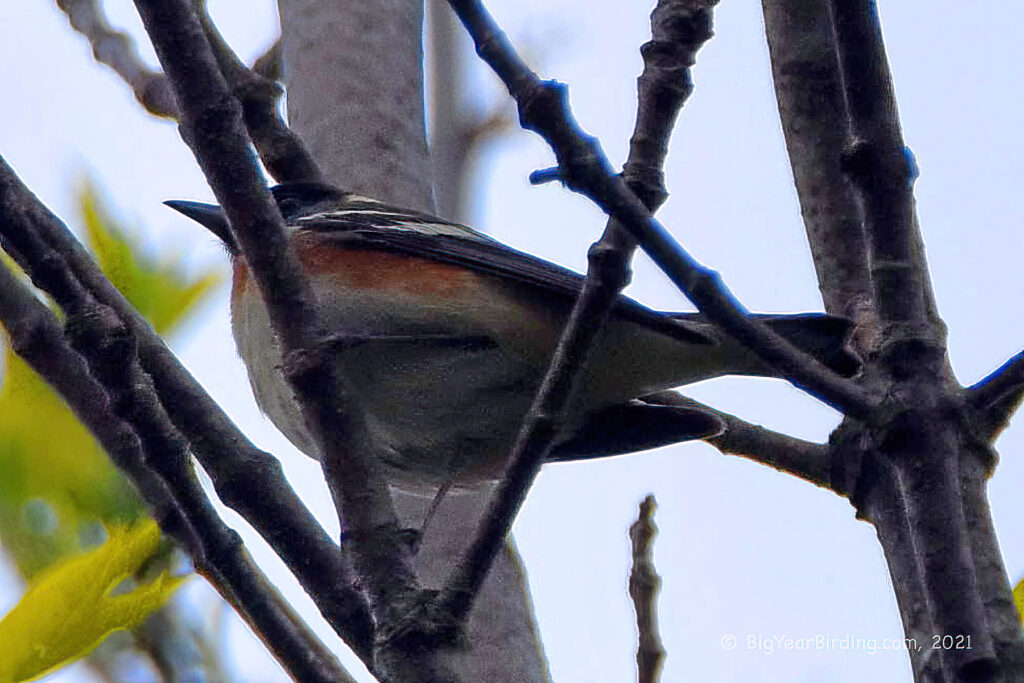The Bay-breasted Warbler (Setophaga castanea) is a small, migratory songbird that measures around 5.5 inches in length and weighs about 0.4 ounces. It has a distinctive plumage with a chestnut-colored crown, black face, and grayish-blue upperparts. The underparts are white with reddish-brown streaks on the flanks and sides, while the wings and tail are black with white patches.
During migration, Bay-breasted Warblers can be found across much of North America, breeding in the boreal forests of Canada and wintering in Central and South America. They are typically seen in North America during the spring and fall, when they are migrating to and from their breeding grounds. In the winter, they can be found in countries such as Colombia, Venezuela, and Ecuador.
Bay-breasted Warblers are primarily insectivores, feeding on a variety of insects and spiders. They forage in trees and shrubs, often hovering to catch their prey. During migration, they can sometimes be seen feeding on berries and other fruit as well.
One of the distinguishing field marks of the Bay-breasted Warbler is the chestnut-colored crown, which is more pronounced in males during breeding season. Another key feature is the white patch on the side of the neck, which is visible when the bird is viewed from the side. The black face and grayish-blue upperparts are also important identifying features.
Overall, the Bay-breasted Warbler is a fascinating and beautiful bird to observe during migration. Its striking plumage and unique features make it a favorite among birdwatchers, and its reliance on boreal forests for breeding highlights the importance of preserving these habitats for future generations.

